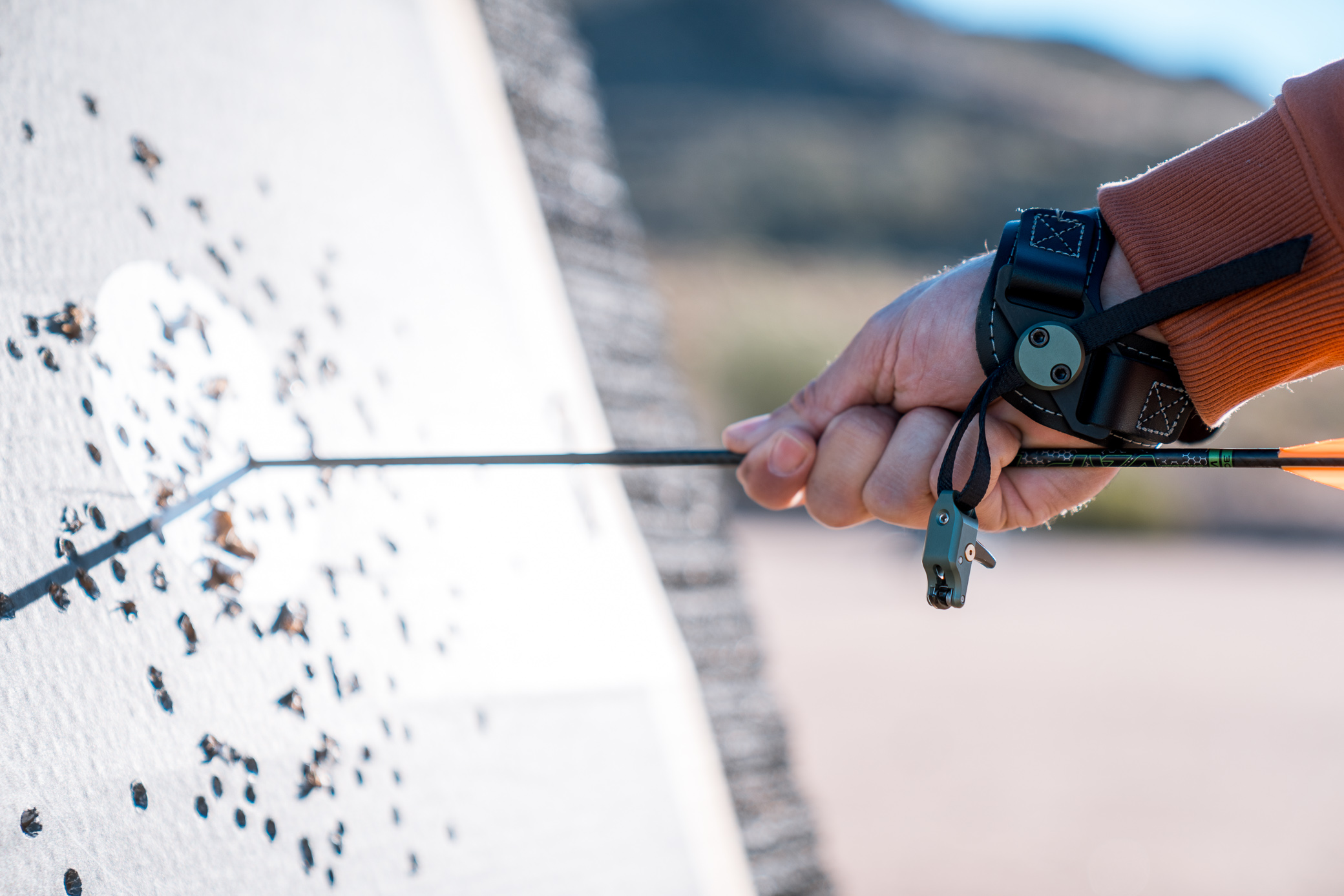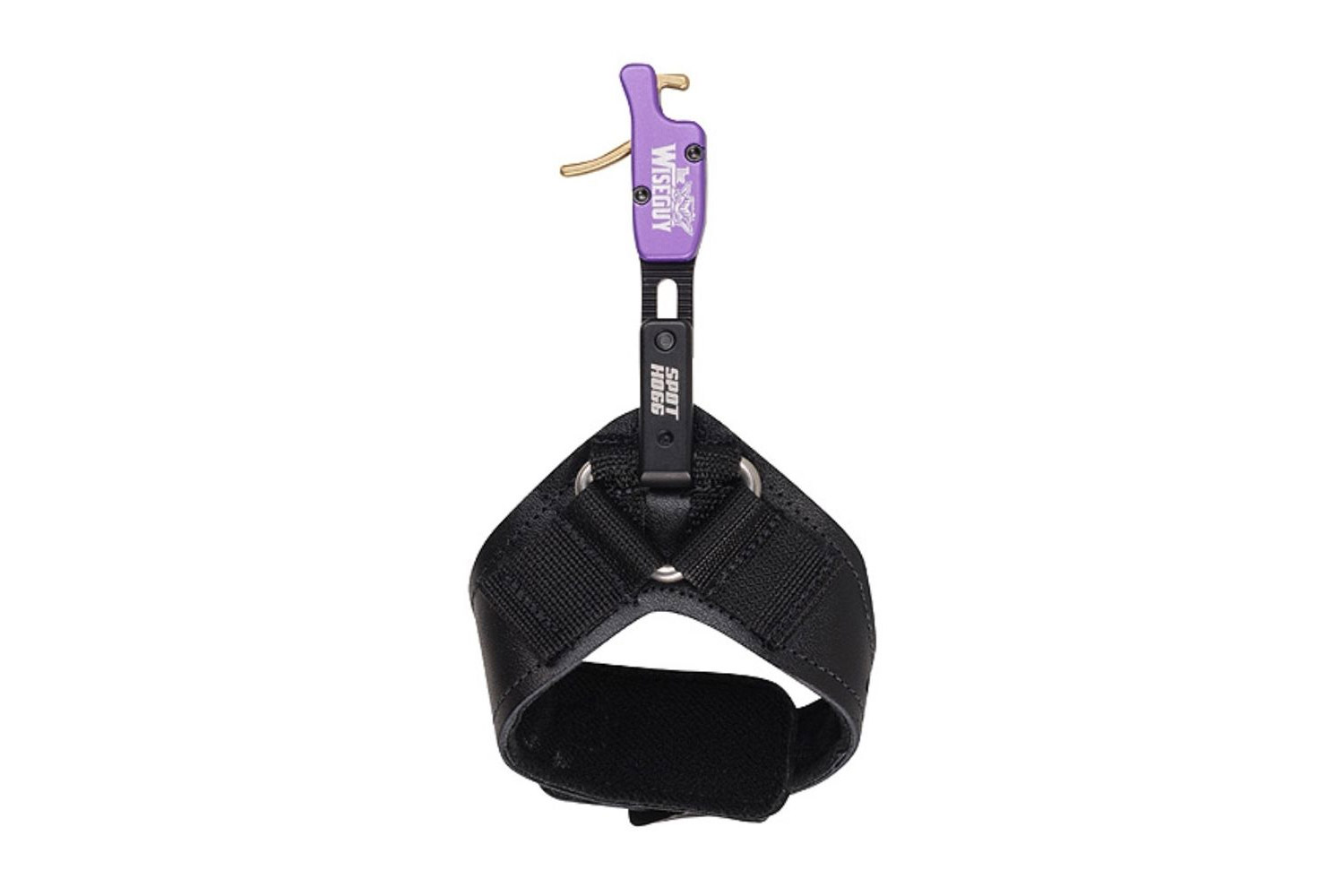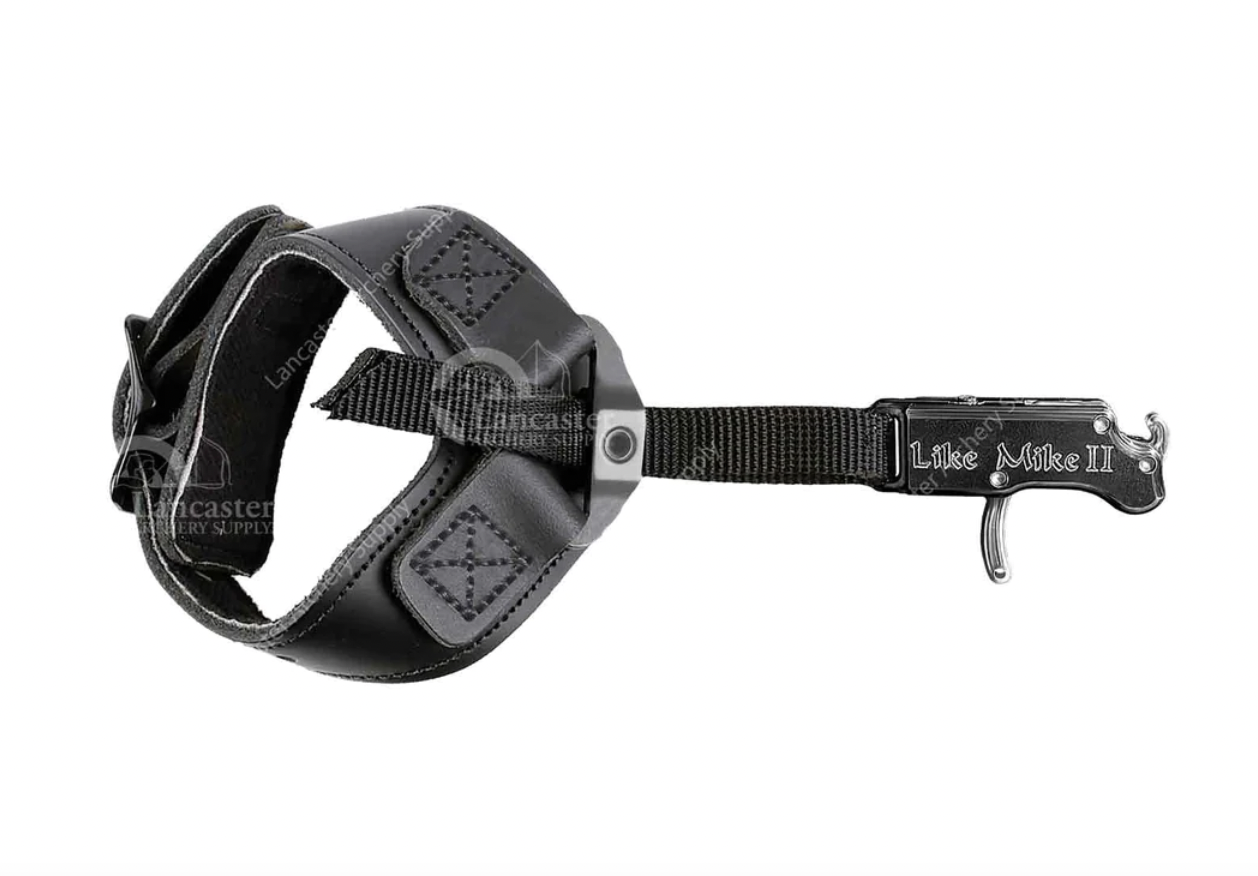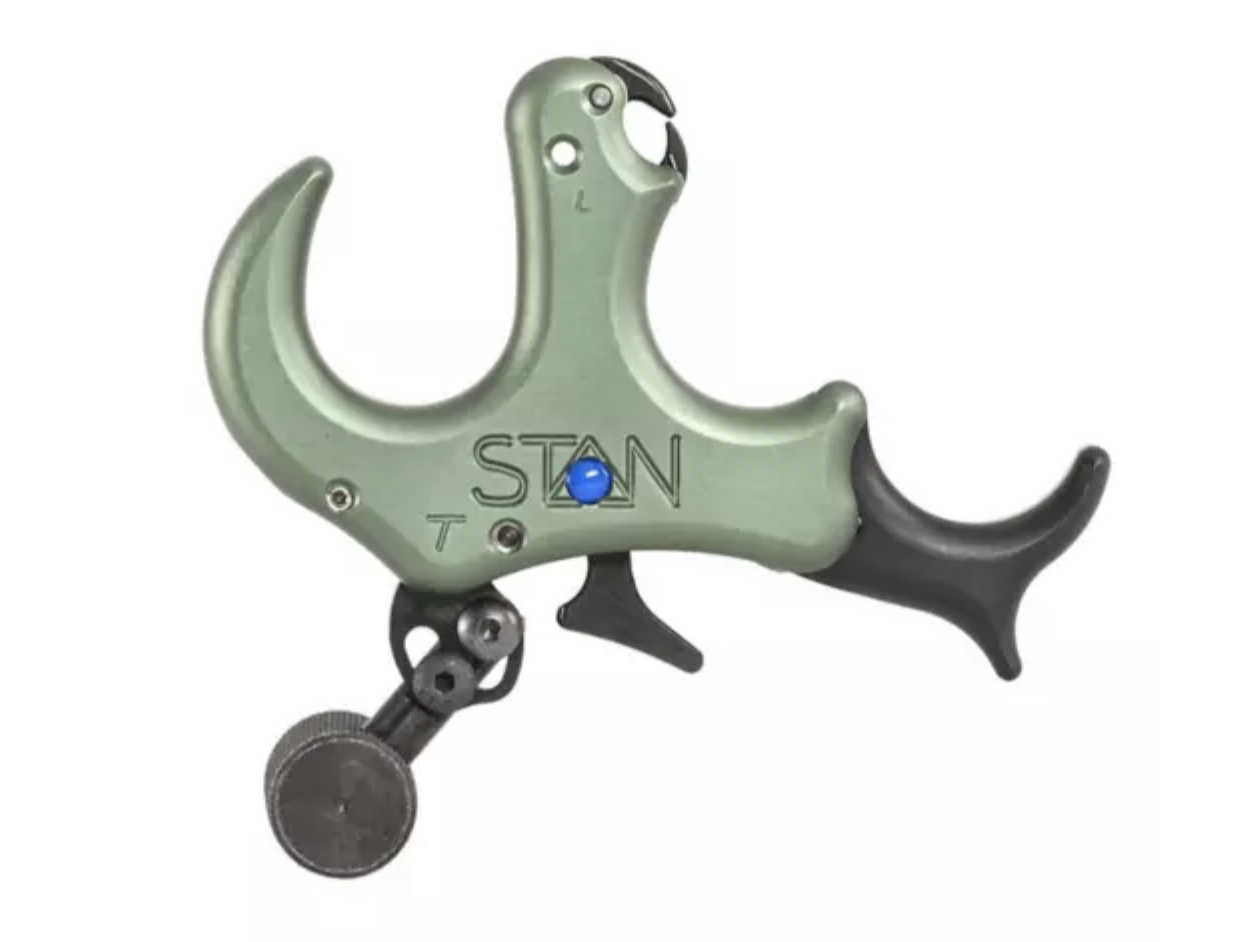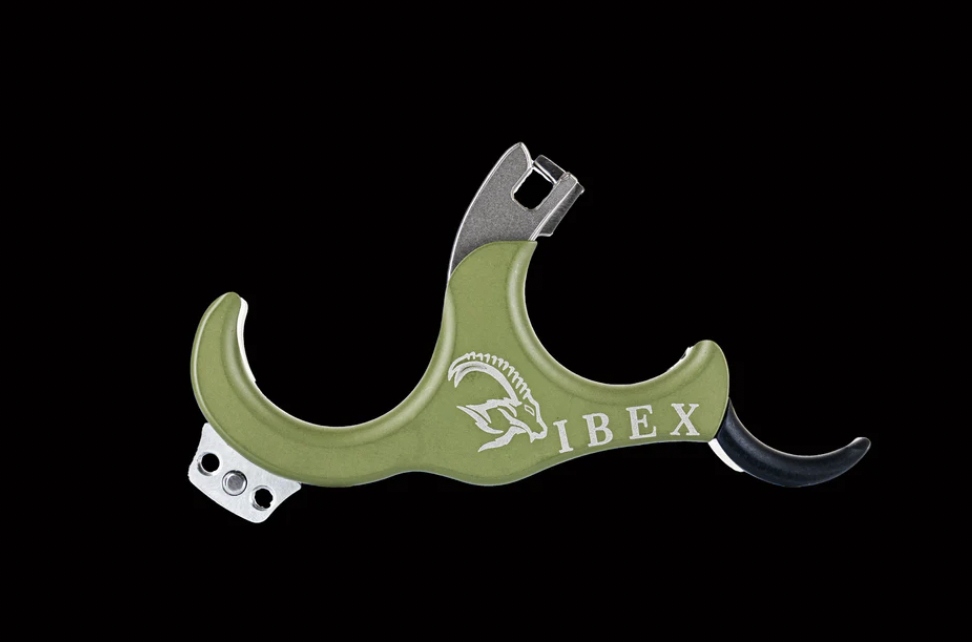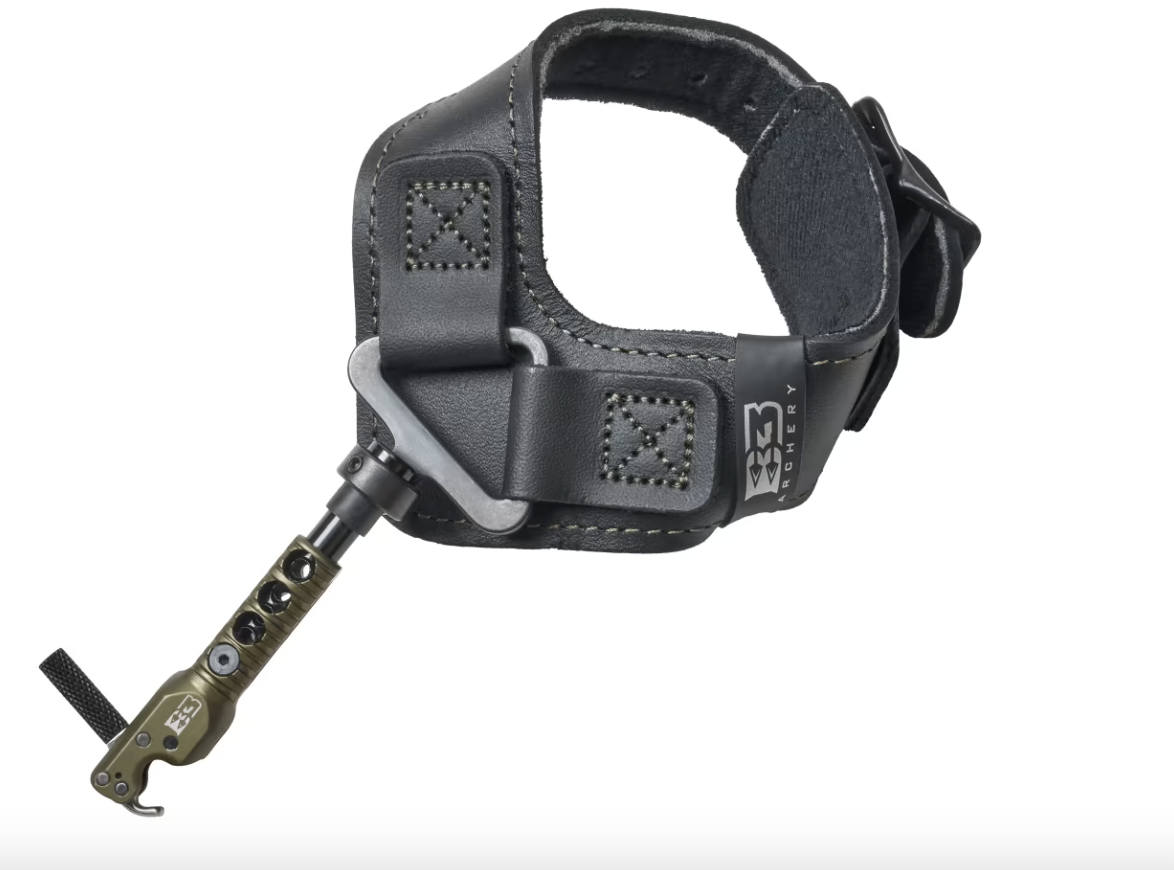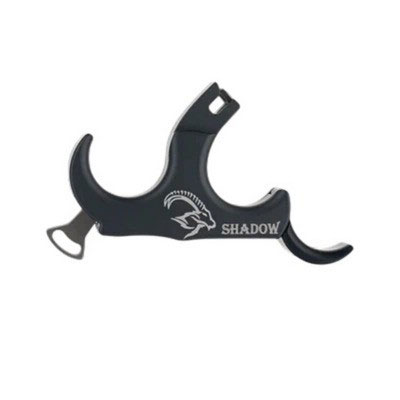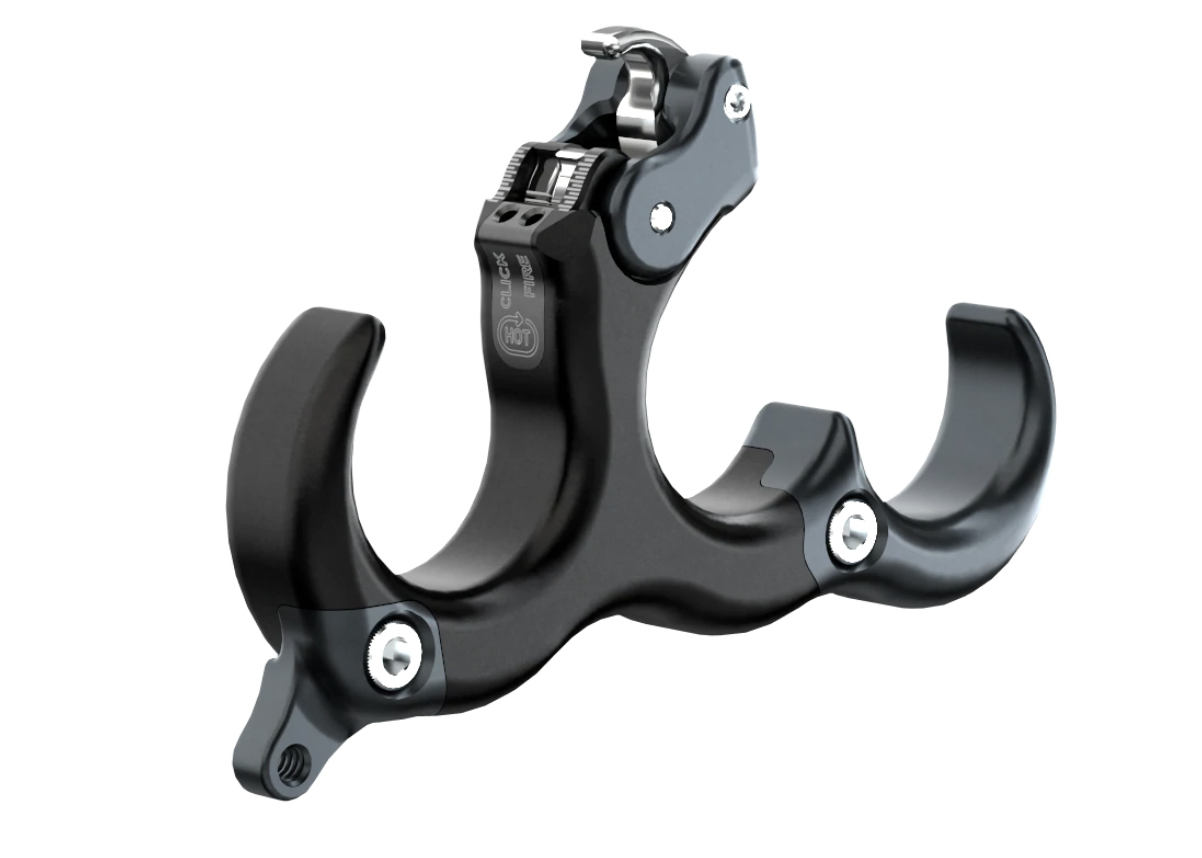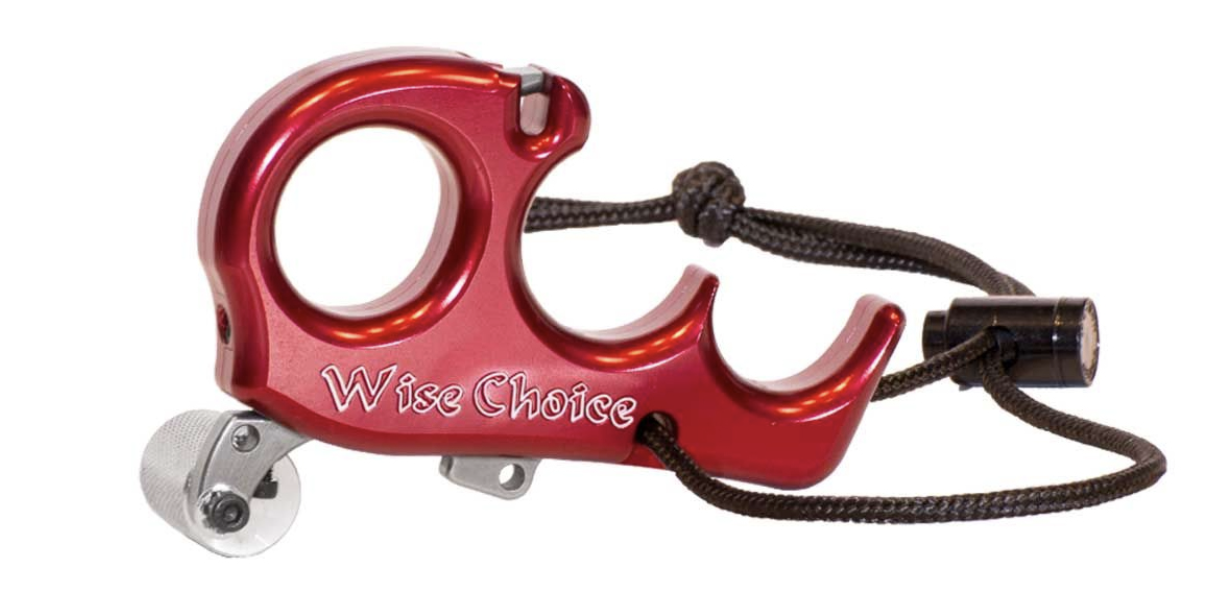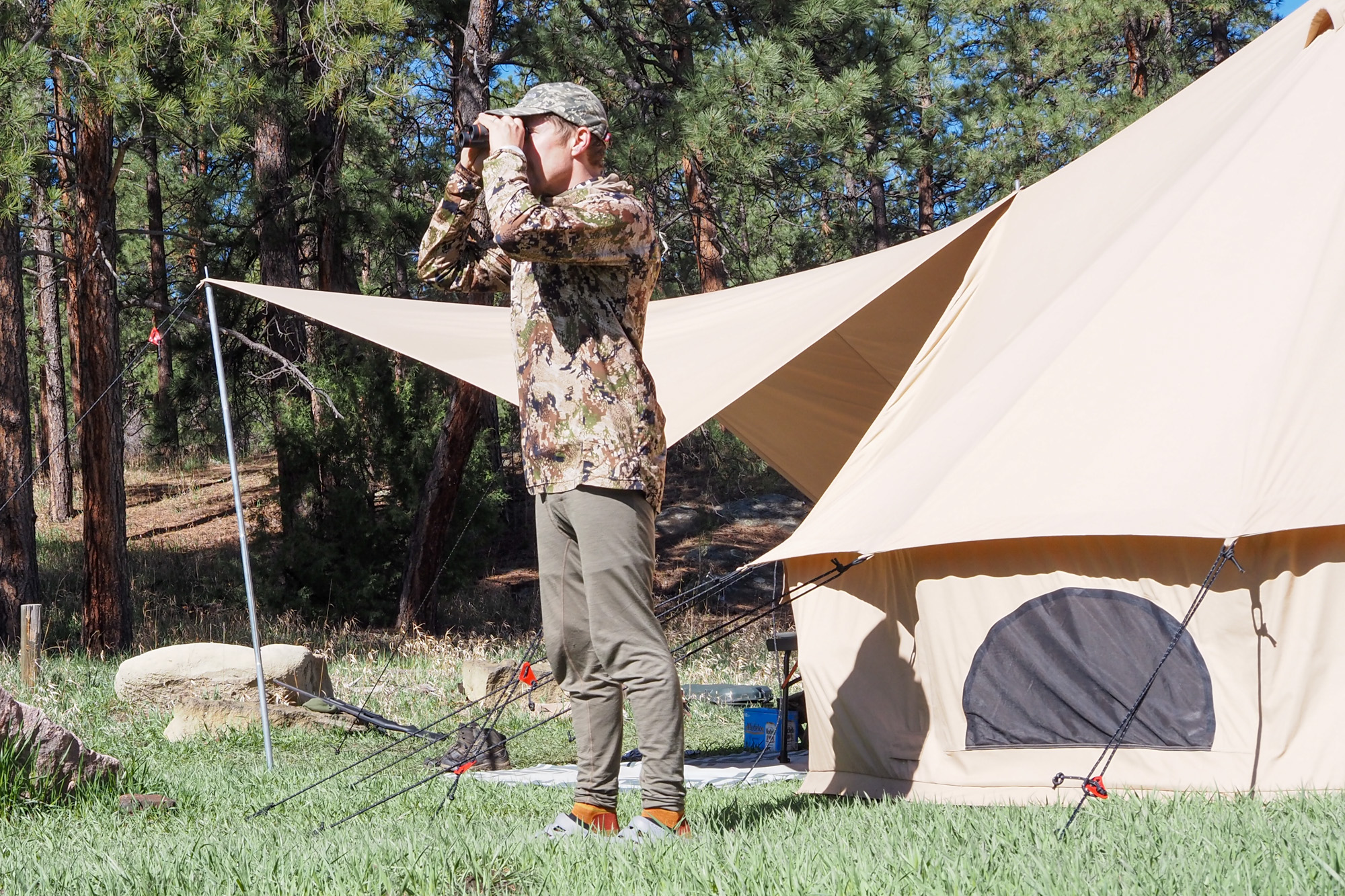An archery release aid is a personal thing. You’ve gotta find the right one for you, not your friend. I’ve personally tested many archery release aids through the years, whether it’s at the archery range or crawling on hands and knees through the desert after a cagey buck.
The right release aid can mean the difference between eating tag soup or not for the season. It needs to meet several criteria in order to be worthy. It needs to feel good in the hand and be durable, dependable, and easy to use.
With that said, there are no shortage of options out there to choose from. Not to worry. I cut the fat and got down to business. Down below are our top picks for release aids in bowhunting for 2025.
Editor’s note: For our July 24, 2025, update, we added the Evolution Outdoors Shadow Thumb Button Release and included a Price and Value section to explain the differences between variously priced release aids.
The Best Archery Release Aids for Bowhunting of 2025
Spot Hogg Wiseguy
- Style: Index release
- Engagement: Adjustable light trigger/no travel
- Attachment point: Self-reloading open hook
Pros
- Easy to use
- An ocean of positive reviews
- Multiple wrist strap styles available (Buckle, BOA, Keep Hammering, etc.)
Cons
- The light trigger can sometimes be too light, causing misfires and even can lead to target panic
Tru-Fire Smoke Buckle Foldback
- Style: Index release
- Engagement: Adjustable forward trigger
- Attachment point: Dual caliper
Pros
- Affordable
- Easy to use
- Folds back when not in use
Cons
- Barrel is limited to how short it can get and is rather long to start. This will keep many from achieving a full hook over the trigger.
Carter Like Mike II
- Style: Index
- Engagement: Rearward trigger
- Attachment point: Open hook
Pros
- The rear trigger and web connect allows for a full hook with an index finger
- Simple but effective adjustments
- Wide range of trigger tensions
Cons
- Expensive
Stan Onnex
- Style: Handheld thumb release
- Engagement: Thumb button
- Attachment point: Hook with loop retainer
Pros
- Crisp trigger
- Has a practice mode
- Very adjustable
Cons
- This trigger can be set so hot that it might prematurely fire.
Evolution Outdoors Ibex
- Style: Handheld hinge
- Engagement: Rotation of a half-moon
- Attachment point: Caliper-style string retention
Pros
- Locks on D-loop
- Click is more of a feel than it is audible
- Can be reset after 'clicking'
Cons
- Resetting the head after each shot takes a bit of practice
Other Release Aids Tested for This Guide
- Style: Index
- Engagement: Forward trigger
- Attachment point: Open hook
Pros
- Great price point
- Auto hook return
- Offered in both flex (web) and swivel (post) versions
Cons
- In order to adjust trigger tension, you need to actually change a spring out, as opposed to slowly adjusting a screw.
- Weight: 2.3 oz.
- Material: Aluminum
- Colors: Arizona Archery Green Cerakote, Sniper Grey Cerakote
Pros
- Very smooth and crisp
- Can hang from D-Loop
- Same profile as the Ibex hinge, meaning the two can be interchanged while still maintaining the same point of impact
Cons
- Only offered in size Medium at the moment
- Style: Index
- Engagement: Index finger trigger
- Attachment point: Open hook
Pros
- Affordable with premium features and design
- Adjustable trigger tension and trigger travel
- Web connect allows one to shoot with a full hook from their index finger
Cons
- A gap beneath the hook can allow debris inside the release
- Style: Handheld hinge
- Engagement: Rotation of a half moon
- Attachment point: Open magnetic hook
Pros
- Quick D-loop acquisition
- Dual moon system
- The magnetic hook doesn’t rattle
Cons
- Expensive – The price will make many folks shy away
- Style: Handheld
- Engagement: Thumb button
- Attachment point: Hook with springed D-loop retainment system
Pros
- Mirrored profile allows one to seamlessly switch between Ultraview hinge and UV button
- Quiet (very little metal-on-metal contact inside release)
- Can leave attached to D-loop at the ready
Cons
- Pretty darn expensive
- Style: Index/handheld hybrid
- Engagement: Trigger
- Attachment point: Single hook with full containment
Pros
- Combines index and handheld pros
- Draw more weight easier and hold at full draw longer
- Good for folks with pre-existing injuries and to help avoid injury overall
Cons
- Design can take some getting used to for operation
- Style: Handheld thumb with wrist strap
- Engagement: Thumb button
- Attachment point: Open single caliper (closes manually)
Pros
- Combines security of wrist strap with the precision of a thumb release
- Ergonomic handle
- Has 3- and 4-finger extensions
Cons
- Manually closing the caliper takes some getting used to
- Style: Handheld thumb
- Engagement: Thumb button
- Attachment point: Fully closed jaw once cocked
Pros
- A favorite among bowhunters
- Can leave hanging on D-loop
- Optional lanyard
Cons
- Pricey
Archery Release Aids Comparison Chart
| Release | Price | Style | Engagement | Attachment point |
|---|---|---|---|---|
| Spot Hogg Wiseguy | $145-180 | Index release | Adjustable light trigger/no travel | Self-reloading open hook |
| Tru-Fire Smoke Buckle Foldback | $60 | Index release | Adjustable forward trigger | Dual caliper |
| Carter Like Mike II | $200 | Index | Rearward trigger | Open hook |
| Stan Onnex | $280-300 | Handheld thumb release | Thumb button | Hook with loop retainer |
| Evolution Outdoors Ibex | $300 | Handheld Hinge | Rotation of a half-moon | Rotation of a half-moon |
| Ultraview Hinge 2 | $250 | Handheld hinge | Rotation of a half moon | Open magnetic hook |
| B3 Archery Hawk | $105 | Index | Forward trigger | Open hook |
| Evolution Outdoors Shadow | $279 | Handheld thumb | Offset or inline thumb button | Rotation of a half-moon |
| Stan SoleX | $99 | Index | Adjustable trigger | Open hook |
| Ultraview Hinge 2 | $250 | Handheld hinge | Rotation of a half moon | Open magnetic hook |
| Ultraview UV Button | $350 | Handheld | Thumb button | Hook with springed D-loop retainment system |
| Spot Hogg Keeton | $115 | Index/handheld hybrid | Trigger | Single hook with full containment |
| Scott Archery Pursuit | $159 | Handheld thumb with wrist strap | Thumb button | Open single caliper (closes manually) |
| Carter Wise Choice | $230 | Handheld thumb | Thumb button | Fully closed jaw once cocked |

Why You Should Trust Us
There isn’t one day. Not one day goes by without me doing something bowhunting-related. It’s one of my ultimate passions, and that passion flows through my veins stronger and stronger with each passing year.
Bowhunting is quite literally a game of inches. A whole lot has to go right in order for success to materialize. Which means there is even more that can go wrong. Release aids are not something I mess around with in the least. They need to be on point, because I need to be on point. In that regard, I’ve tried a ton of releases, and am always looking for the next best one.
In order to come up with this list, I took into consideration durability, dependability, ease of use, and practicality. Some of these releases have been shot over and over again for years, dragged through all manner of weather, getting thrown every which way from Sunday. Along with that, I noted a wide range of price points, other experts in my circle, and then also market demand. All of them cut the mustard.
When testing, I’m looking for how crisp the trigger engagement is, the feel of the release in my hand, and the adjustments. Adjustments like trigger travel and trigger tension are tinkered with for the right feel too. Durability is something I don’t take lightly either. Bowhunting doesn’t happen in a nice, comfortable office. It happens at the mercy of Mother Nature and the gear that’s with me needs to be ready for that.
A bad release can blow up a hunt. And for me, that’s just not an option. It shouldn’t be one for you either.
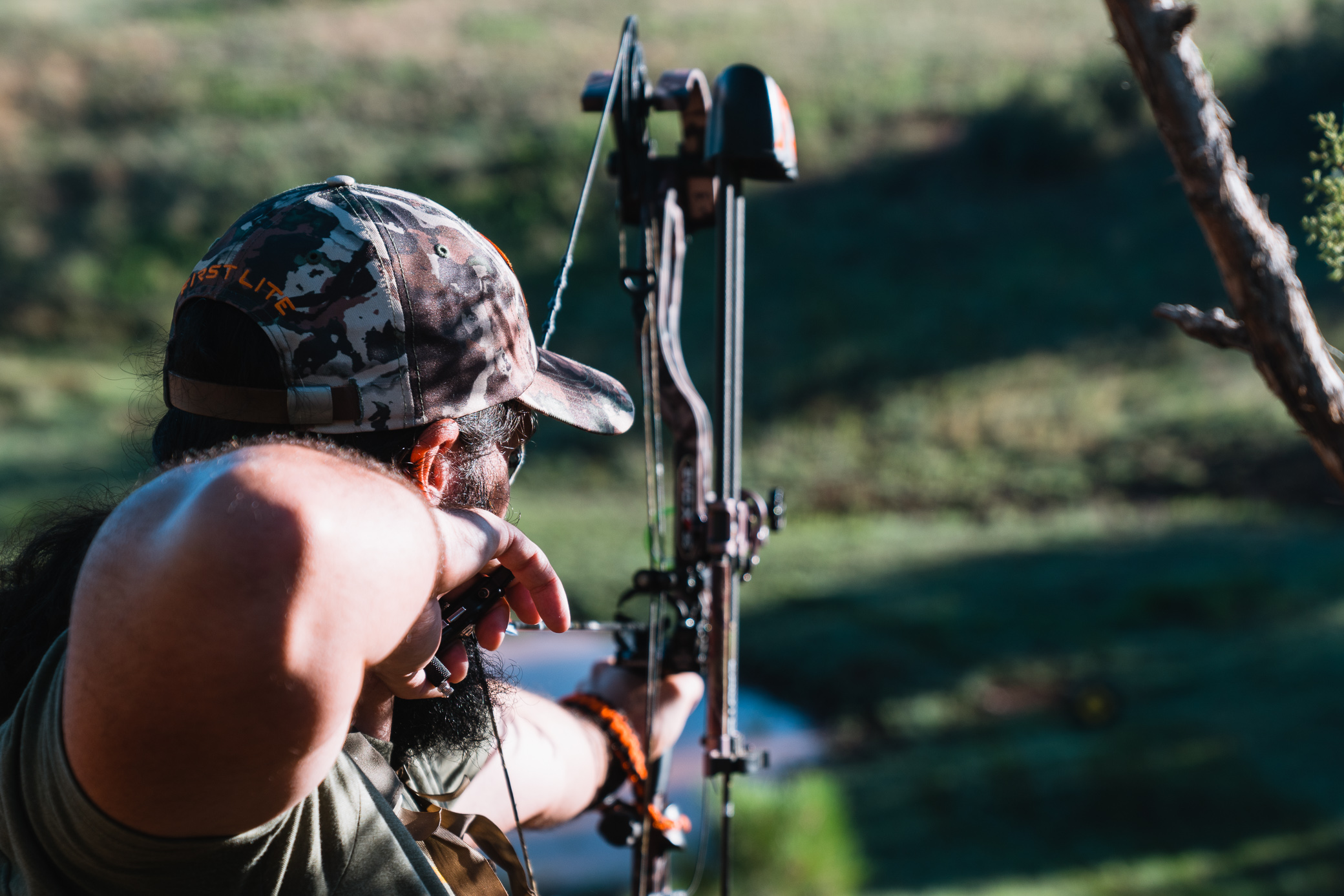
Buyers Guide: How to Choose the Best Archery Release
Handheld vs. Index Release
Going through our list, you’ll notice that there are several options for both handheld and index-style release aids. So, on top of just finding the right release for you, this poses yet another question. Should you snag a handheld release or an index-style release?
Both releases are tried and true, but they indeed each have their own pros and cons. Here is a breakdown of each to get you set on the right track
Index-Style Release Aid
Index-style release aids are by a long shot the most popular option among bowhunters. If you’re familiar with firing a gun at all, even a toy gun, this will be a pretty seamless transition. Operating this trigger system is nearly identical to that of a trigger on a gun.
These releases attach to your wrist via a buckled or Velcro strap. A very handy feature for field use and one that will make sure your release is always ready. The chances of losing one of these are very slim because of this. Along with that, they are incredibly easy to use.
As I mentioned above, it’s virtually the same as the trigger on a gun. Pull the bow back, aim, and pull the trigger. That’s all she wrote. All of this makes these a fantastic option, especially for beginner bowhunters. There are also plenty of seasoned pros who prefer the simplicity of this type of release.
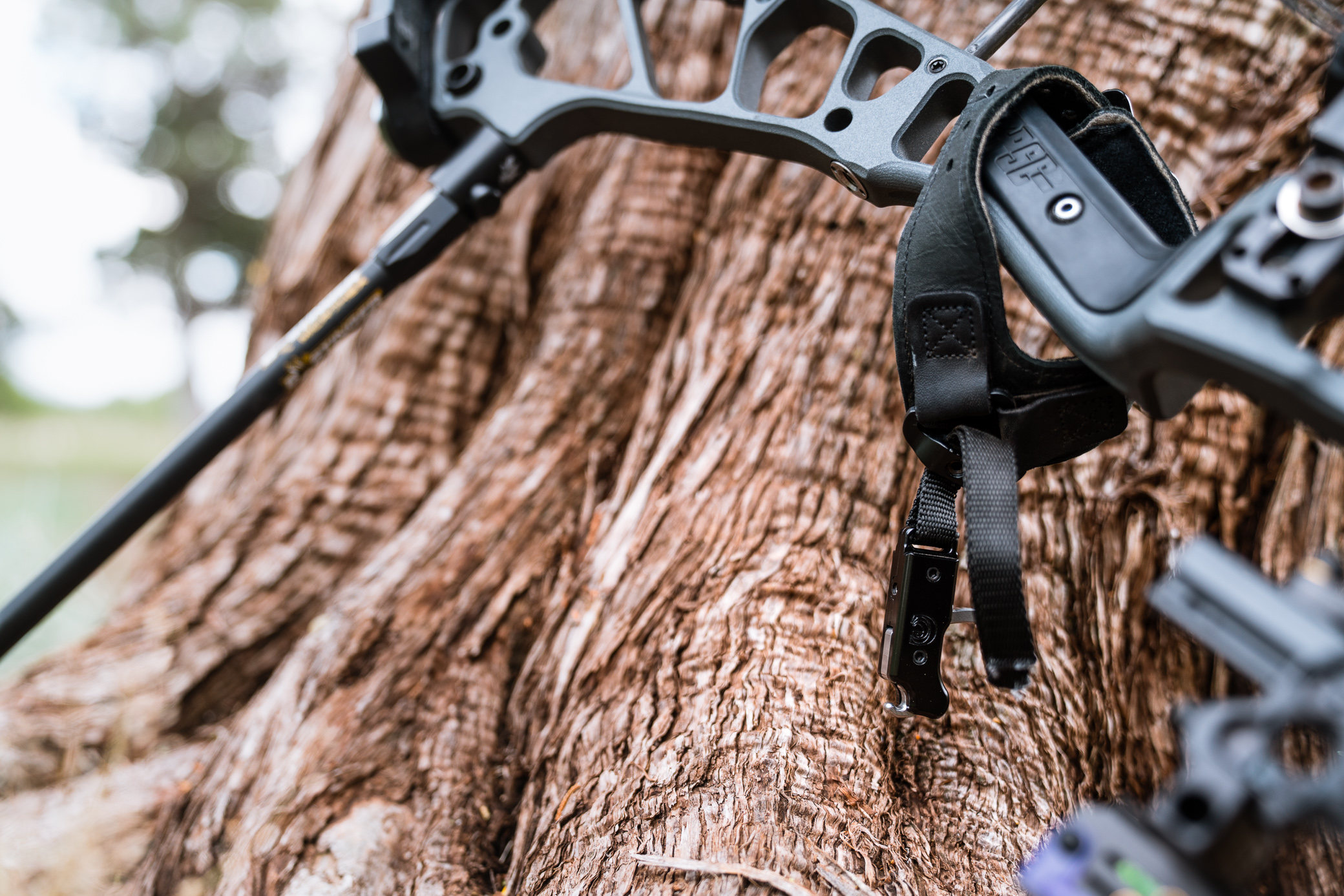
The biggest downside of an index-style release is that they are notorious for instilling target panic in folks. Because they are so easy to use, most don’t actually learn the proper way to use them. Why learn when it’s the same as a gun, right? It’s very similar mentally, but not the same in terms of technique.
Without direction and proper technique, bad habits can form, and boom goes the dynamite. You’ve got the panic. It’s best to try and stay on top of this before it’s an issue.
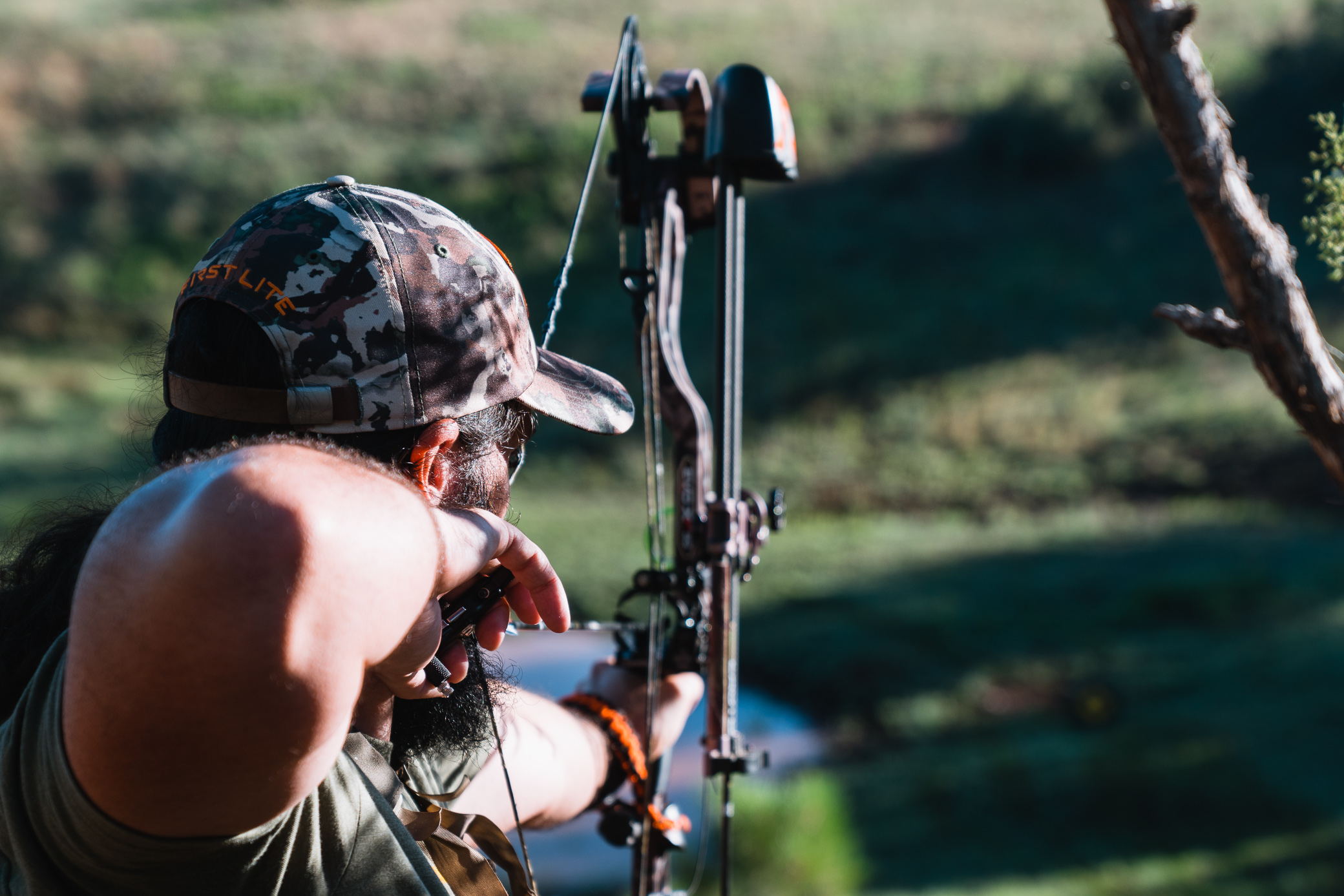
Handheld Release Aid
On the other side, we have the handheld release. As far as what they are, the name really says it all. These are going to be either thumb buttons, hinges, or resistance releases.
Each one of them operates a little differently, but they are all known for their incredible accuracy. Mostly prevalent in the target world, these have been growing in popularity quite a bit for bowhunting over the last few years.
One of the biggest ups I can personally give handheld releases is their ability to combat the target panic that we mentioned above. This is why I personally believe most bowhunters will naturally end up trying one out. They are a fantastic tool for reshaping the mind and battling the mental demon that is target panic.

Along with this, they each cater much more to achieving a surprise shot, which usually translates into more consistent accuracy. This is why they are favored among target archers. And with thumb button releases in particular — depending on the design — hunters can actually attach their release to their D-loop and just let it hang there at the ready. A convenient setup.
Just like anything, though, handhelds have their shortcomings. Handhelds are much easier to lose, as most models are not attached to your wrist. Because of how pricey these can be, that’s a hard pill to swallow and a lucky day for anyone who finds the release you dropped.
And with them not attached to your wrist, if it’s not already attached to your D-loop, there is the possibility of fumbling around looking for your release in the heat of the moment. There’s a smidge more thinking involved with a handheld. Either way, a little practice will be in order.
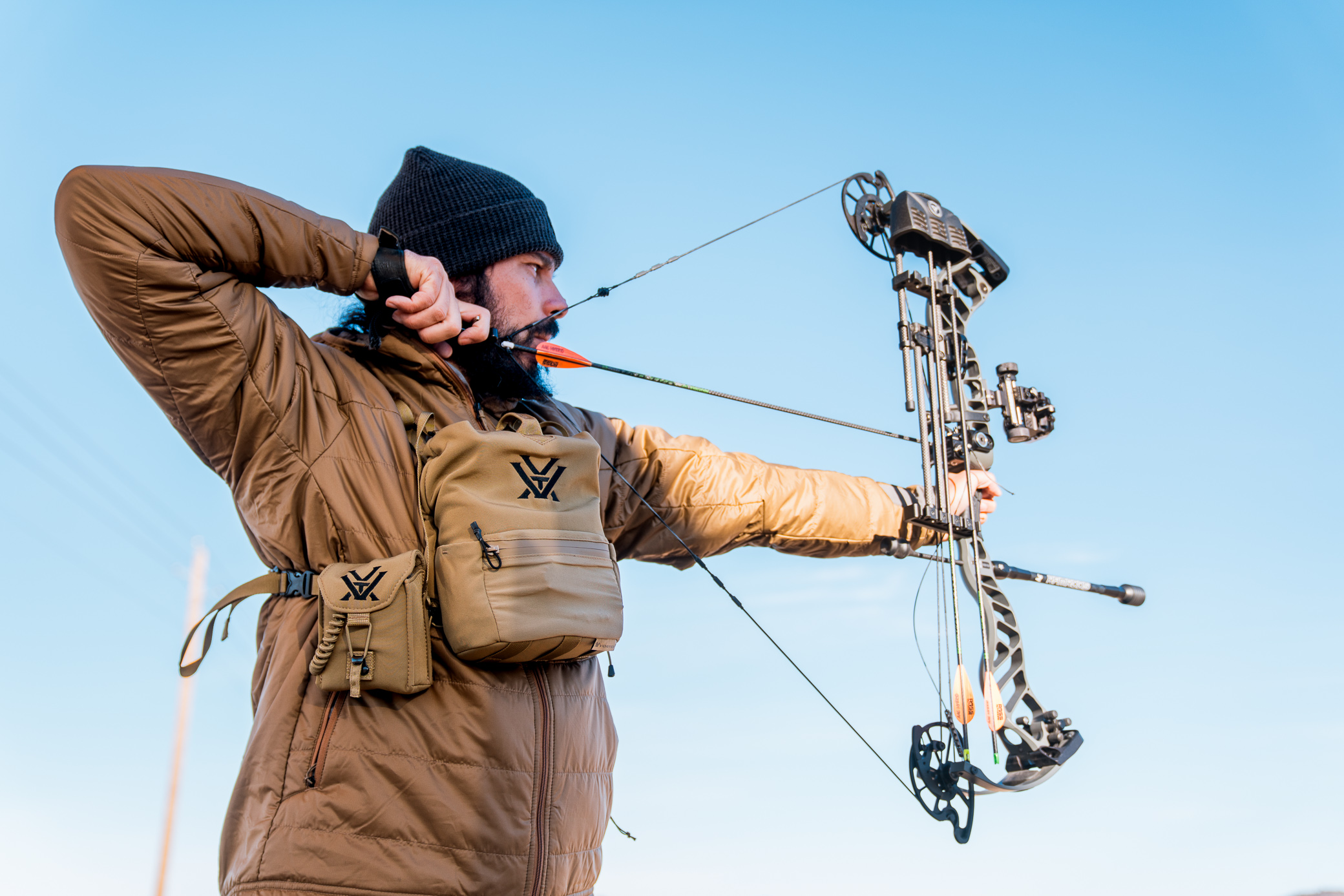
So, Which One Is Better?
As far as which one is better, that really is going to depend on you, your style of hunting, and your goals. Treestand hunters might prefer those thumb-button handhelds more because they can attach the release and let it hang until ready to shoot.
Spot and stalk hunters might prefer an index style, so they don’t have to worry about where their release is as they crawl through the sagebrush toward that bedded buck. The answer rests in the beholder.
My best advice here is to go try them all out and go with the option that feels the best for you. Most bow shops have various archery releases that you can try on-site, so it never hurts to ask.
We’re all different, and we need to remember that. Sure, there is give and take on each end, but you are the one who decides what you want to give and take. Form your own opinions and hunt the way you want to hunt.
Price and Value
At face value, a release may seem like a basic piece of equipment. Many hunters who don’t understand why on earth someone would pay over $200 for one when there are options that do “the same thing” for $40. However, they’re far from basic and spending more money on one is worth the coin.
Budget
At a minimum, hunters should plan on spending $30-60 on a release. And honestly, it should be closer to the $60 mark. Releases have complicated, small internal parts, and quality construction is important.
Budget releases are made from lower-quality materials without tight tolerances. Cheaper ones may end up failing. Is that worth saving a few bucks? A release is the primary thing keeping your bow from sending a sharp projectile downrange at high speeds. From a safety standpoint, that’s probably not the best. And when bowhunting, anything that can go wrong will go wrong. You don’t want a cheap release to be the thing that results in a missed shot you worked so hard to get.
That being said, there are budget options like the Tru-Fire Smoke Buckle Foldback that will provide reliable performance. Most quality budget releases are index releases. That’s because handheld releases require more moving parts, which cost more to manufacture.
For many hunters, a budget index release is all they ever use. However, that can build bad habits. If you develop target panic, you’ll more than likely need to jump up in price on a new release.
Mid-Tier
Jumping up to $90-160 gives bowhunters access to a more diverse style of releases. In this price range, you’ll find some decent thumb releases, such as the Scott Archery Pursuit. Handheld releases in this price range won’t have the smoothest operation and won’t be as adjustable as their expensive counterparts.
Spending this kind of money will also give you access to some of the highest-quality index releases on the market like the Stan SoleX and the Spot Hogg Wiseguy. Since index releases aren’t as complicated as other styles, brands can put high-quality materials, tight tolerances, and greater adjustability in them without asking extremely high prices.
Premium
Archery release aids are a lot like the trigger on a gun. Sure, you can get by with a cheap one. But the best will be buttery smooth, have a wide range of adjustability, and likely improve accuracy. For release aids, that means spending $200 or more.
Releases like the StanOnnex allow users to adjust the trigger/button tension to perfectly fit the archer’s preference. That particular release also comes with different barrel sizes, and you can adjust the angle of the barrel. Stan even allows you to adjust the number of fingers you place on the release. That’s the name of the game with premium releases: adjustability that allows the perfect fit for individual users.
In this price category, you’ll be able to find a myriad of hinge releases and thumb releases. Many of these releases are designed to help develop proper form and can assist archers in overcoming target panic.
Like a high-end trigger, premium releases will have a smooth operation, tight tolerances, and be built to last. Don’t get me wrong, they won’t automatically make you a better archer, but if used correctly, they will tighten up groupings. If you’re doing things right and shooting your bow often, a premium release is the way to go.
FAQ
You should use the one you feel the most comfortable using and what you’re most accurate with. We stand by our top pick of the Spot Hogg Wiseguy here.
We really like thumb button releases for treestand hunting like the Stanislawski OnneX because you can attach the release to the d-loop and let it hang at the ready.
Speaking about index style releases, your release aid should be short enough that you can fully wrap your index finger around the trigger at full draw.
Technically you don’t need a release for your bow and you can shoot with fingers. However, using a release will make for a more consistent and repeatable release arrow after arrow.
Ultimately, you should use the release you feel most comfortable with, but a wrist strap index-style release is definitely more practical for bowhunting. This is due to the fact that it’s attached to your wrist at all times, so no losing it in the field. Along with the ability to command shoot if need be. Not to forget, these are generally the easiest to use. All releases work, but there is a reason the index style is the most widely used for bowhunting.
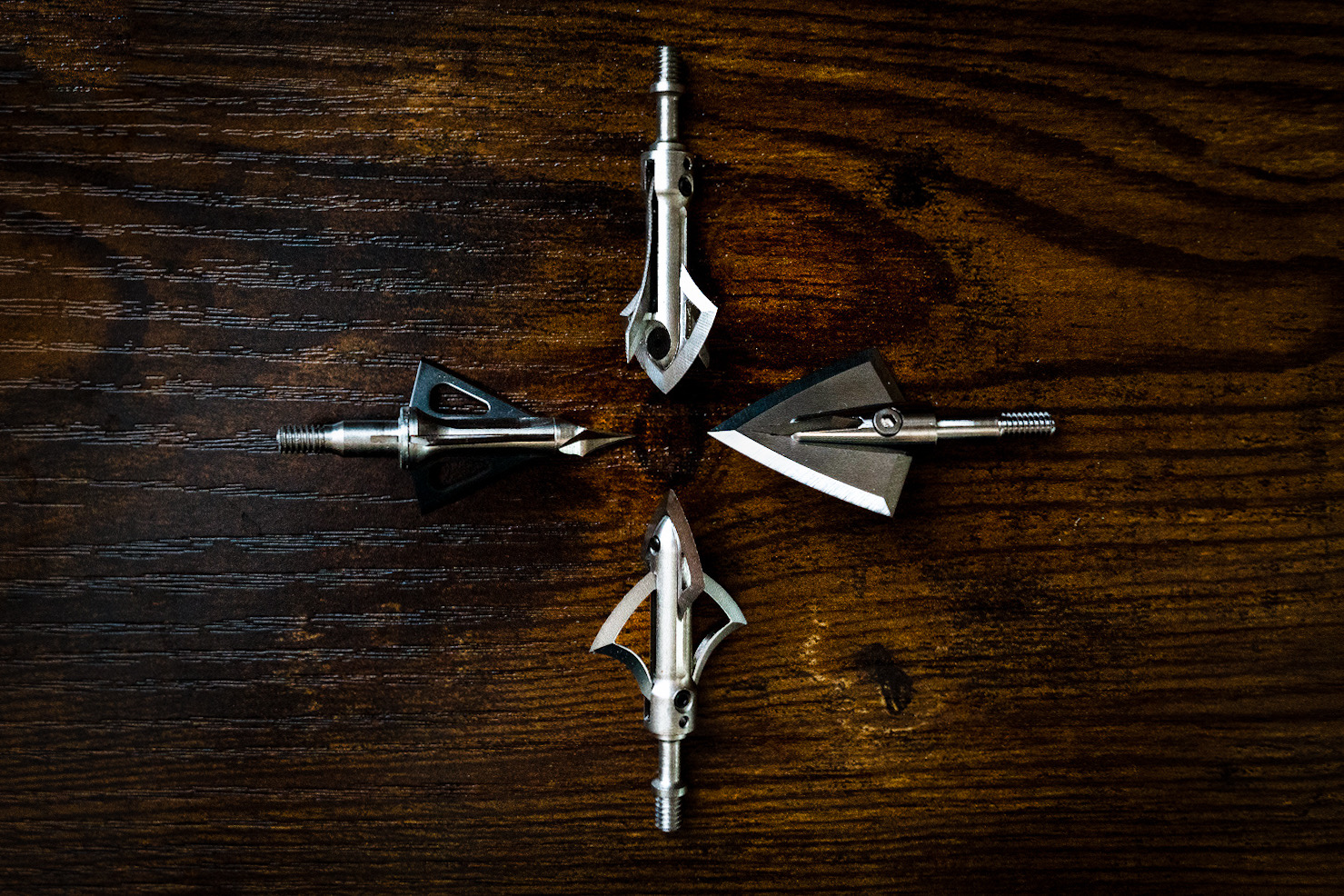
The Best Broadheads for Hunting in 2025
Finding the right broadhead for you can be the difference between filling a tag and not. Here’s our list of game-dropping broadheads for 2025.

The Best Archery Targets of 2025
A good archery target is one of your tickets to consistent accuracy with a bow. Here are our picks for the best archery targets of 2025.
